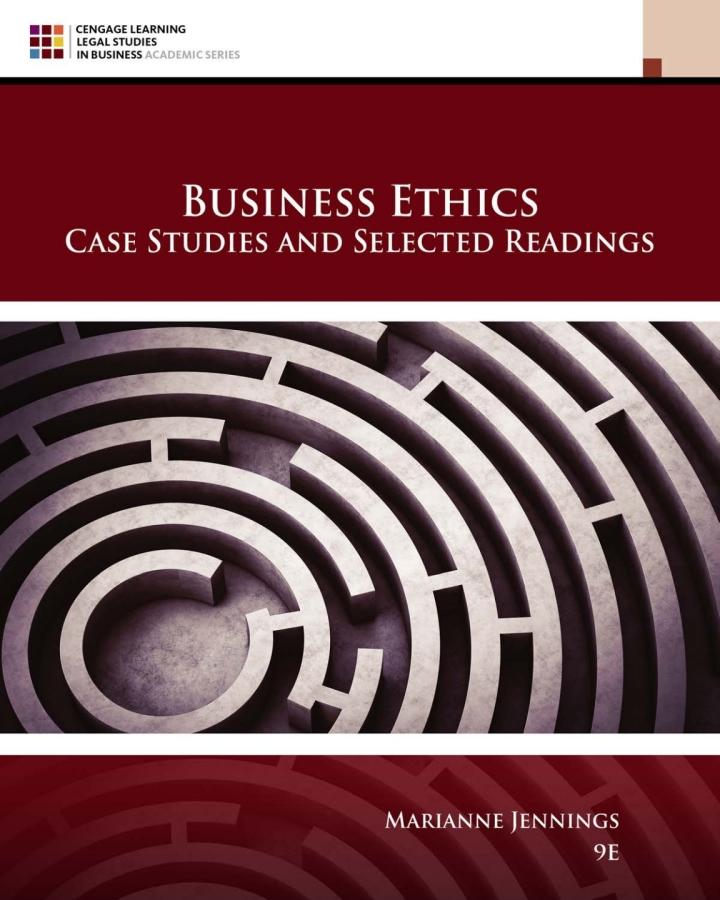The Foundation for New Era Philanthropy was founded in 1989 by Mr. John G. Bennett Jr. New
Question:
The Foundation for New Era Philanthropy was founded in 1989 by Mr. John G. Bennett Jr. New Era took in over \$200 million between 1989 and May 1995, from 180 nonprofit organizations, before the Securities and Exchange Commission (SEC) brought suit against New Era and the foundation went into bankruptcy.
Mr. Bennett was, at that time, a charismatic individual who was able to bring in many individual and institutional investors (most of them nonprofit organizations that included many colleges and universities) with the promise of a double-your-money return. \({ }^{694}\) The foundation began as a matching-gift program. Mr. Bennett would take the funds from the nonprofit, deposit them in a Prudential Insurance account that would earn interest at Treasury rates, and then work to find a matching donor. The intentions were good, and initially the funds were small. Mr. Bennett would later admit that there never were any matching donors. As word of his success spread, the size of the funds the nonprofits deposited increased, and the greater the challenge became for finding a matching donor. And the pressure was growing. Mr. Bennett was receiving attention and accolades for his efforts. Former Philadelphia Mayor (then governor) Ed Rendell felt that Mr. Bennett's efforts had the potential for changing how people perceived Philadelphia both because of his success and also because the funds were helping nonprofits in their educational and community improvement efforts. \({ }^{695}\)
Mr. Bennett often met personally with investors or their representatives and opened and closed his sessions with them with prayer. Among the individual investors in New Era were Laurance Rockefeller; singer Pat Boone; then-President of Procter \& Gamble John Pepper; John Whitehead, the former cohead of Goldman Sachs; and former Treasury Secretary William Simon. The institutional investors included Harvard, Princeton, University of Pennsylvania, the Nature Conservancy, and the National Museum of American Jewish History. \({ }^{696}\)
In 1991, Melenie and Albert Meyer moved from their native South Africa to Michigan, where Mr. Meyer took a tenure-track position as an accounting professor at Spring Arbor College. Because there were only three accounting majors at the time he was hired, Mr. Meyer was also required to work part-time in the business office. 697 During his first month in the business office, Mr. Meyer found that the college had transferred \$294,000 to Heritage of Values Foundation, Inc. He connected the term Heritage with Reverend Jim Bakker and went to the library to research Heritage of Values Foundation, Inc. Although he found no connection to Jim Bakker, he could find no other information on the foundation. Mr. Meyer asked his supervisor, the vice president for business affairs, Ms. Janet M. Tjepkema, about Heritage of Values and the nature of the transfer. She explained that Heritage was the consultant that had found the New Era Foundation and had advised the college to invest in this "double your investment" fund.............................
Discussion Questions 1. Why did Mr. Meyer have so much difficulty canvincing his college administrators that there was a problem with New Era?
2. Did Mr. Meyer follow the right steps in trying to bring New Era to the attention of the college officials?
3. What impact did Mr. Meyer's personal situation (visa and tenure issues) have on his desire to carry through with his concerns?
4. Why were administrators so reluctant to hear Mr. Meyer out? Mr. Bennett notified Spring Arbor College officials when Mr. Meyer called him and asked administrators to keep Mr. Meyer quiet. How would you read this kind of request? What would you do if you were an administrator?
5. About 40 of the nonprofit organizations that had invested in New Era and withdrawn their funds and earnings prior to its collapse voluntarily agreed to return their money to the bankruptcy pool. 704 An administrator from Lancaster Bible College, in explaining the return of his college's funds to the trustee, quoted St. Paul's letter to the Philippians: "Let each of you look not only to his own interest but also to the interests of others" (Phillipians 2:4). Hans Finzel, head of CB International, a missionary fund, said his organization would not be returning the money: "It's true that it's tainted money, but it's also true that we received it in good faith."705 Compare and contrast the positions of the parties. Would you return the money?
6. Is this case an indication that nonprofits operate as businesses and are susceptible to the same business ethics issues? Should nonprofits have ethics programs and training for their staff and volunteers?
Step by Step Answer:

Business Ethics Case Studies And Selected Readings
ISBN: 9780357453865
9th Edition
Authors: Marianne M. Jennings





